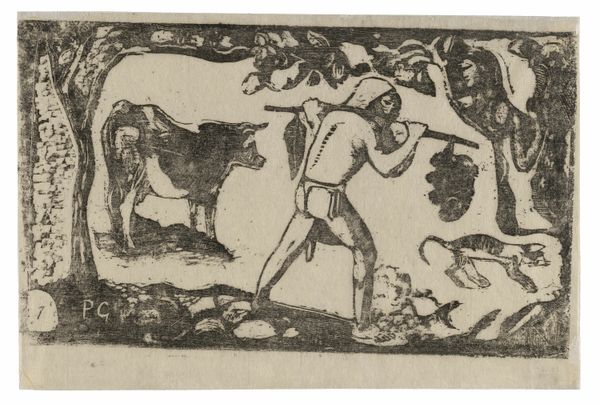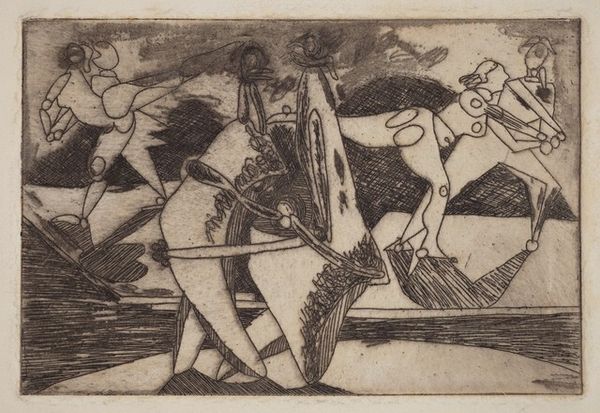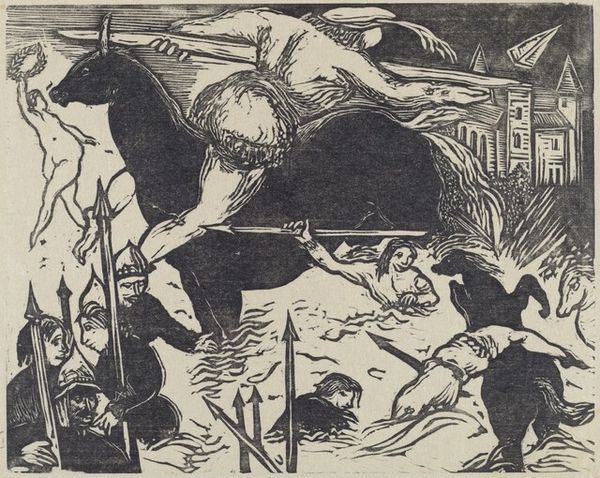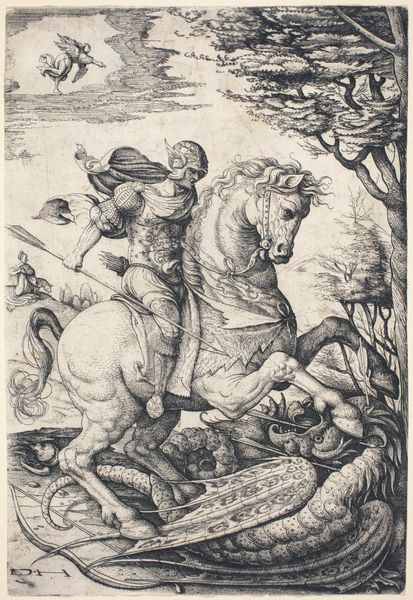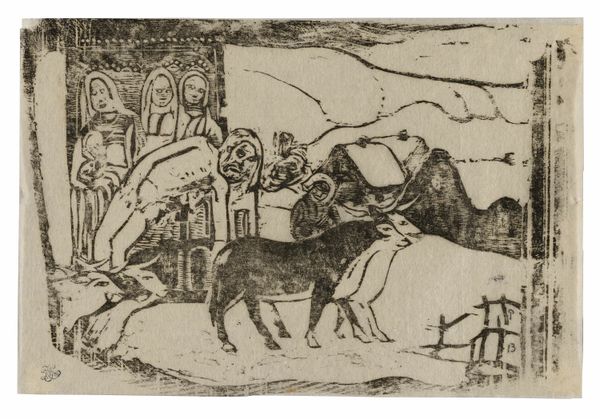
print, woodcut
# print
#
landscape
#
figuration
#
ink drawing experimentation
#
fruit
#
woodcut
#
symbolism
#
post-impressionism
#
monochrome
Dimensions: 6 3/8 x 11 5/16 in. (16.2 x 28.7 cm)
Copyright: Public Domain
Curator: Today, we're looking at Paul Gauguin’s “Tahitian Carrying Bananas,” a woodcut likely created between 1898 and 1899. You can currently find it here at The Met. Editor: It's strikingly raw, isn't it? The high contrast of the black ink on the pale paper creates this almost unsettling directness. Curator: Gauguin certainly wasn’t interested in depicting Tahiti photographically. As a post-Impressionist, he utilized symbolism to communicate deeper emotional truths. It's not just an island scene, but an imagined landscape imbued with personal meaning. This print appears to engage in visual shorthand; the woman’s simple garb contrasts the cow’s direct and brutal presence. Editor: Yes, and that rough, almost primitive carving…it emphasizes the physicality of the process. You can almost feel Gauguin wrestling with the woodblock. Look how the grain resists detail and embraces these heavy shapes, particularly in the woman’s muscular stance. The bananans even hanging in contrast from her are abstracted as well, in an organic sense. Curator: Gauguin deliberately used materials to reject established artistic conventions. By using this medium to depict Tahitian life, it's almost as though he aimed to give these works and this culture a certain ‘authenticity’ in the European market of the time. Editor: Authentic, or exotified? It is vital to consider the art market alongside Gauguin's processes of material transformation. Curator: Well, that’s where the tension lies, doesn't it? Gauguin certainly romanticized Tahitian life in his prints and paintings. He wasn't accurately representing reality but creating an idealized version for the European gaze, to make a name for himself in Europe. Editor: And making a commodity, an easily-consumed representation of island life through labor and process. Even the wood carries traces of the place he tried to capture, the labor embedded in each carved line speaking to both artist and subject. Curator: I appreciate how this print prompts us to reflect on how images become vehicles for ideas, and perhaps misinterpretations. Editor: Agreed. Examining both its making and circulation allows us to consider how artistic consumption impacts culture. It also allows us to examine our contemporary lens of art from historical eras that are problematic to our standards.
Comments
No comments
Be the first to comment and join the conversation on the ultimate creative platform.
